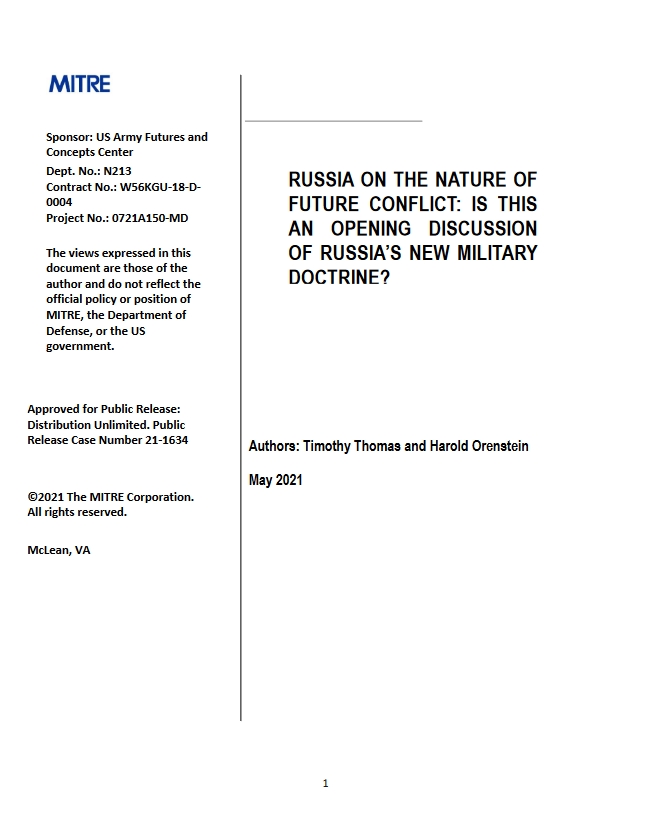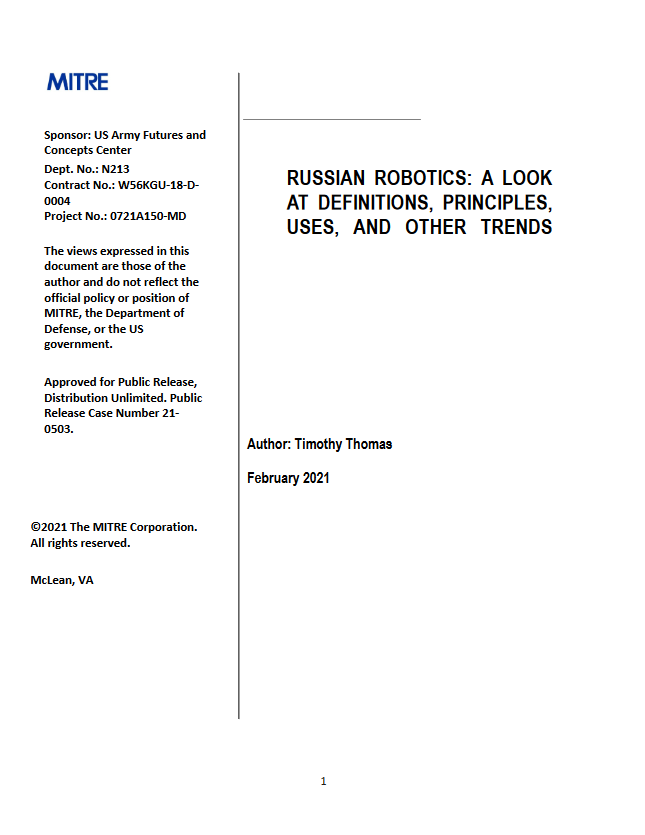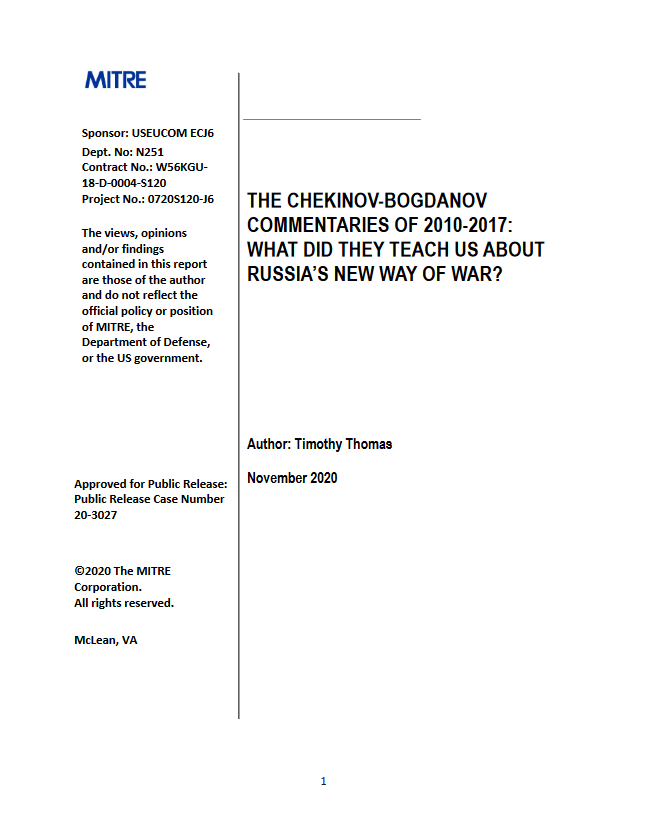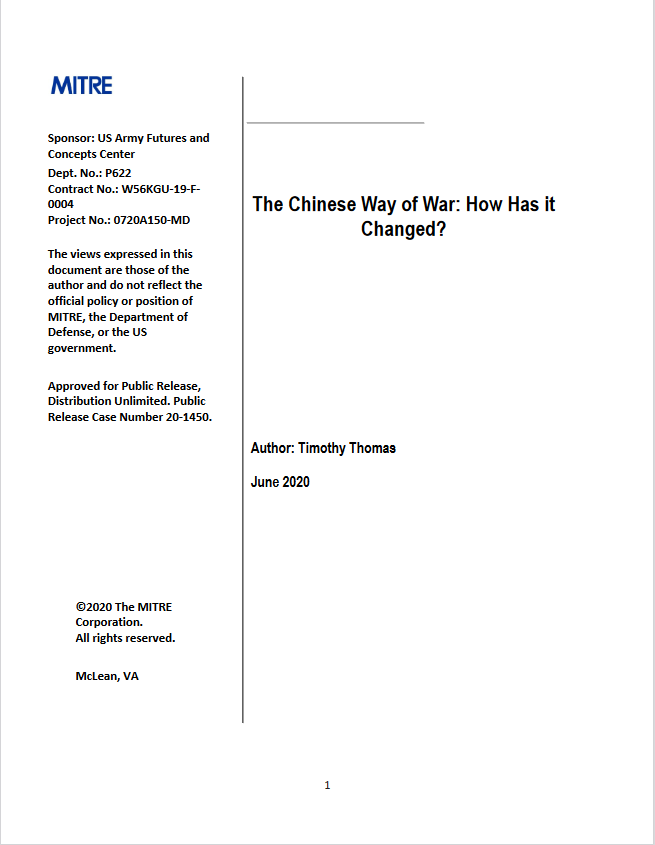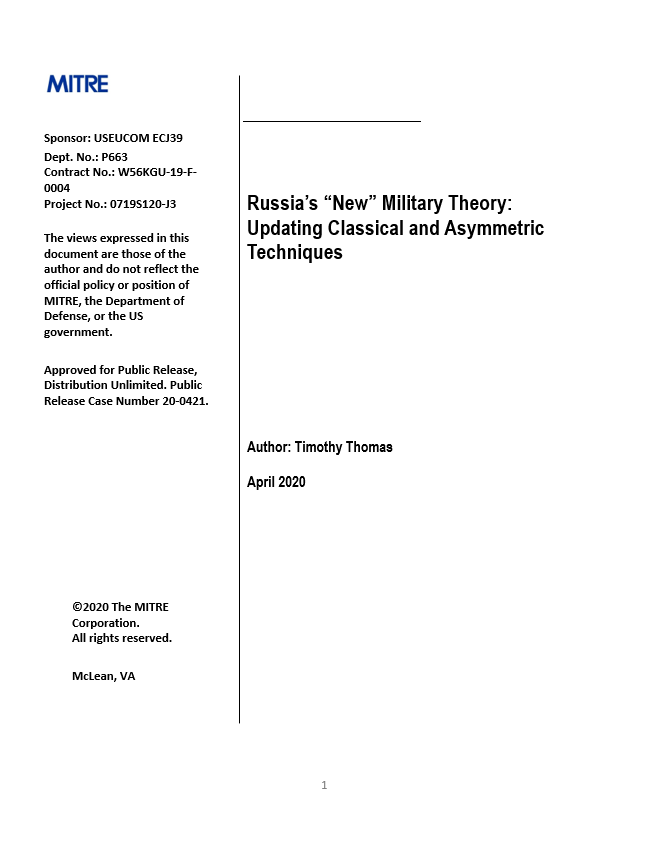(Click image to download brief.)
KEY TAKEAWAYS
The 1983 Military Encyclopedic Dictionary of the Soviet Union stated that military doctrine “contains two closely interlinked and interdependent aspects—a socio-political aspect and a military-technical aspect.”1 The socio-political aspect contains the greatest stability while the military-technical aspect encompasses matters directly pertaining to military organizational development and technical equipment. It helps determine the forms and methods for conducting operations.2
Likewise, the dictionary states that the character/nature of war is composed of socio- political and military-technical components (the 2007 Military Encyclopedic Dictionary, Moscow: Eksmo, did not define the term). The socio-political aspect includes economic and socio-political causes, conflicts which led to war’s occurrence, class thrusts and political aims of belligerents, and the degree to which these aims are in conformity with social progress. This character of the socio- political component may change during a war’s course. The military-technical component of war’s character includes conventional and nuclear military hardware, the forms and methods of the conduct of military operations, and the scope, scale, and duration of war.3 While dated, the definitions offer most of the basic elements of these concepts today. Even though the article that follows is about the nature of future conflict, it should be kept in mind that the analysis is also about how Russian military authors may be sizing up their next version of military doctrine.

